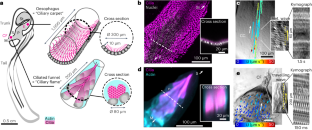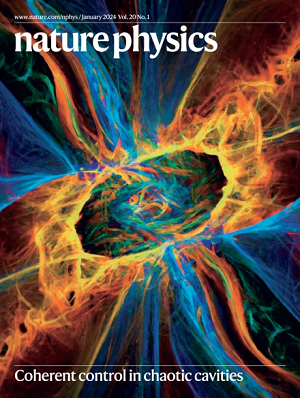流动物理学指导纤毛器官的形态学
IF 17.6
1区 物理与天体物理
Q1 PHYSICS, MULTIDISCIPLINARY
引用次数: 0
摘要
通过运动纤毛的协调跳动泵送腔内液体的器官是动物生理不可或缺的组成部分。这类器官包括人类的呼吸道、脑室和生殖道。虽然动物界的纤毛组织和导管形态千差万别,但导管通常分为地毯式和火焰式两种设计。这两种不同设计背后的原因以及它们与液体泵送的关系仍不清楚。在这里,我们证明了两个结构参数--管腔直径和纤毛与管腔之比--将观察到的导管多样性组织成一个连续的光谱,将所有动物门类的地毯和火焰连接起来。利用统一的流体模型,我们证明地毯和火焰代表了流速和压力产生之间的权衡。我们提出,纤毛器官设计的趋同遵循的是功能限制而不是系统发育距离,并为合成纤毛泵提供了指导性设计原则。本文章由计算机程序翻译,如有差异,请以英文原文为准。


Flow physics guides morphology of ciliated organs
Organs that pump luminal fluids by the coordinated beat of motile cilia are integral to animal physiology. Such organs include the human airways, brain ventricles and reproductive tracts. Although cilia organization and duct morphology vary drastically in the animal kingdom, ducts are typically classified as carpet or flame designs. The reason behind the appearance of these two different designs and how they relate to fluid pumping remain unclear. Here, we demonstrate that two structural parameters—lumen diameter and cilia-to-lumen ratio—organize the observed duct diversity into a continuous spectrum that connects carpets to flames across all animal phyla. Using a unified fluid model, we show that carpets and flames represent trade-offs between flow rate and pressure generation. We propose that the convergence of ciliated organ designs follows functional constraints rather than phylogenetic distance and offer guiding design principles for synthetic ciliary pumps. The ducts of many fluid-pumping organs feature cilia. Two structural parameters organize the different types of ducts into a continuous spectrum between ciliary carpet and flame designs depending on the fluid-pumping requirements.
求助全文
通过发布文献求助,成功后即可免费获取论文全文。
去求助
来源期刊

Nature Physics
物理-物理:综合
CiteScore
30.40
自引率
2.00%
发文量
349
审稿时长
4-8 weeks
期刊介绍:
Nature Physics is dedicated to publishing top-tier original research in physics with a fair and rigorous review process. It provides high visibility and access to a broad readership, maintaining high standards in copy editing and production, ensuring rapid publication, and maintaining independence from academic societies and other vested interests.
The journal presents two main research paper formats: Letters and Articles. Alongside primary research, Nature Physics serves as a central source for valuable information within the physics community through Review Articles, News & Views, Research Highlights covering crucial developments across the physics literature, Commentaries, Book Reviews, and Correspondence.
 求助内容:
求助内容: 应助结果提醒方式:
应助结果提醒方式:


